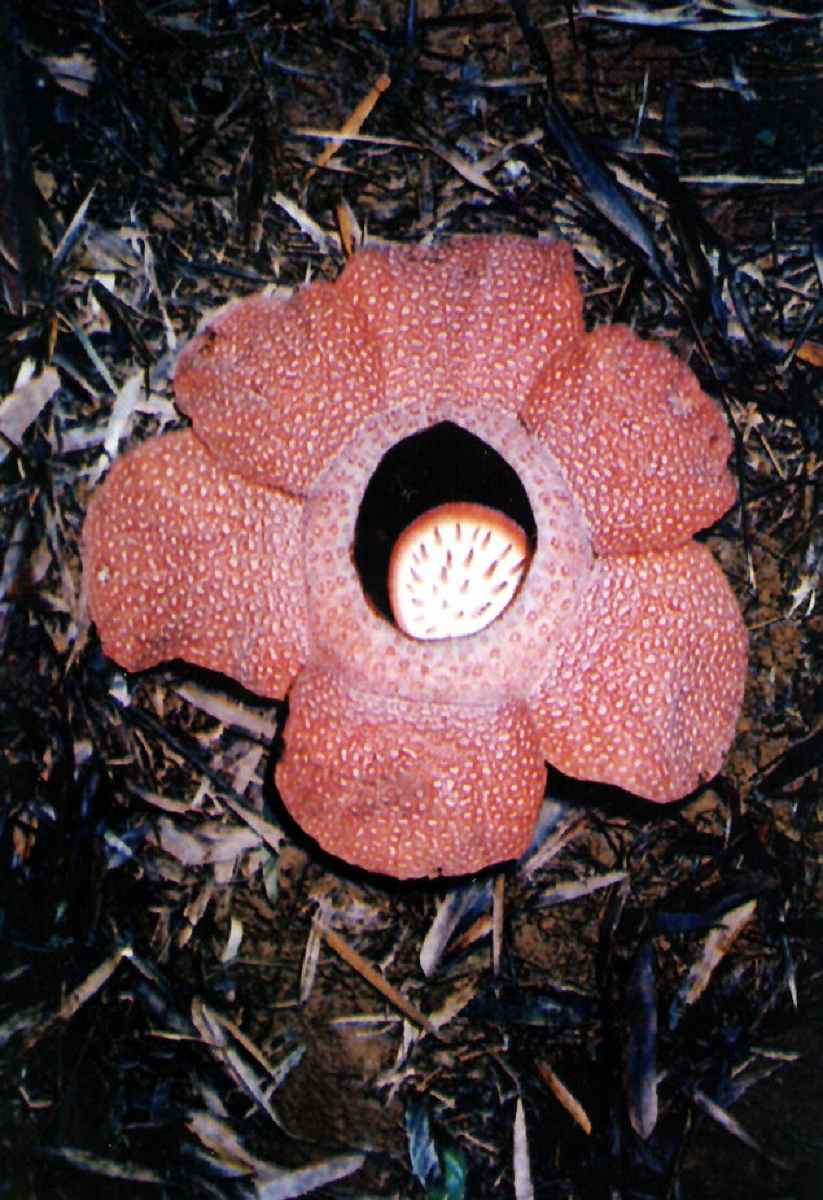
A Rafflesia flower
16:54 JST, September 29, 2023
BANGKOK (AFP-Jiji) — Most species of the famously large Rafflesia flower, which has long captured the imagination with its enormous speckled red petals, are now at risk of extinction, new research warned on Sept. 20.
Rafflesia is actually a parasite, and lives on tropical vines across parts of Southeast Asia, producing blooms that are among the largest in the world.
It is something of an enigma, with its flowers emerging unpredictably, and botanists have had limited success propagating it outside its natural environment.
One species of the flower is currently classed as “critically endangered,” according to the International Union for Conservation of Nature.
To better understand the plant and its conservation status, an international group of botanists examined 42 known Rafflesia species and their habitats — primarily Brunei, Indonesia, Malaysia, the Philippines and Thailand.
Based on the rapid disappearance of its forest habitats, as well as insufficient conservation strategies and protection plans, the plant is at far greater risk than previously known, they said.
“We estimate that 60% of Rafflesia species face a severe risk of extinction,” the researchers wrote in the study, published on Sept. 20 in the peer-reviewed Plants, People, Planet journal.
Some species risk going extinct before they are even known to science, the study said, urging more research into the unusual plant.
“We urgently need a joined-up, cross-regional approach to save some of the world’s most remarkable flowers, most of which are now on the brink of being lost,” said Chris Thorogood, deputy director of Oxford University’s Botanical Garden and a study author.
The research points out that the plant is believed to grow in fairly limited areas, making it particularly vulnerable to habitat destruction.
It also highlights several bright spots in conservation efforts, including successful propagation at a botanical garden in Indonesia’s West Java, and sustainable ecotourism around the plant in West Sumatra.
Last year, nations pledged to protect 30% of the world’s land and seas by 2030 in a landmark deal to slow the disappearance of species and ecosystems.
Repeated studies have warned that the twin threats of climate change and environmental destruction caused by humans are dramatically reducing biodiversity worldwide.
"Science & Nature" POPULAR ARTICLE
-

Genome Study Reveals Milestone in History of Cat Domestication
-

Big Leap in Quest to Get to Bottom of Climate Ice Mystery
-

Japan Set to Participate in EU’s R&D Framework, Aims to Boost Cooperation in Tech, Energy
-

Paws on Parade: Nairobi’s Dogs Dazzle at ‘Pawchella’
-

Japan’s H3 Rocket Failed in Latest Launch, Says Official
JN ACCESS RANKING
-

Tokyo Economic Security Forum to Hold Inaugural Meeting Amid Tense Global Environment
-

Keidanren Chairman Yoshinobu Tsutsui Visits Kashiwazaki-Kariwa Nuclear Power Plant; Inspects New Emergency Safety System
-

Imports of Rare Earths from China Facing Delays, May Be Caused by Deterioration of Japan-China Relations
-

University of Tokyo Professor Discusses Japanese Economic Security in Interview Ahead of Forum
-

Japan Pulls out of Vietnam Nuclear Project, Complicating Hanoi’s Power Plans
























